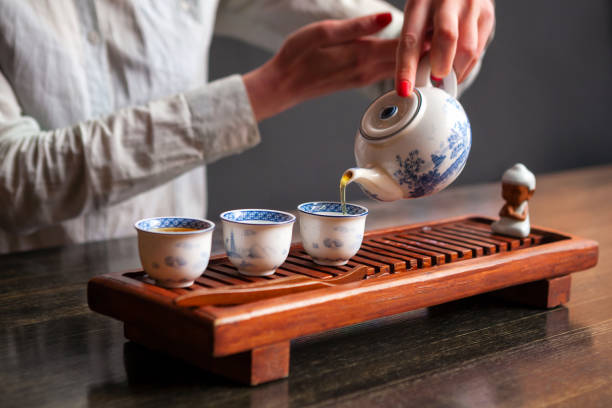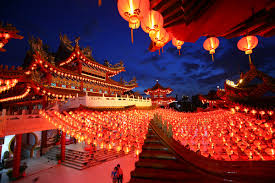Introduction
Tea is more than just a beverage in China; it is an essential part of the culture, philosophy, and everyday traditions. With a history that spans thousands of years, tea has played a central role in social life, spiritual rituals, and even in the realms of economy and politics. From imperial tea ceremonies to local tea markets, tea symbolizes balance, serenity, and harmony with nature.
1. The Historical Roots of Chinese Tea
According to ancient legends, Emperor Shen Nong discovered tea in 2737 BCE when some leaves from a tea tree accidentally fell into a pot of boiling water. Since then, tea spread from emperors and monks to the general public.
During the Tang Dynasty (618–907 AD), tea became part of daily life, and the first tea books emerged, such as the “Cha Jing” (The Classic of Tea) by Lu Yu. In the Song Dynasty, tea preparation evolved into an art form, while the Ming Dynasty saw a shift from compressed tea to loose leaf tea — the form we recognize today.
2. Major Types of Chinese Tea
China is home to a stunning variety of teas, classified by their processing and fermentation methods:
Green Tea (绿茶 – Lǜ Chá):
Unfermented, preserving its fresh flavor and green color. Famous types: Longjing (Dragon Well), Bi Luo Chun.Chinese Black Tea (红茶 – Hóng Chá):
Fully fermented, globally known as “red tea.” Notable varieties: Qimen, Lapsang Souchong.White Tea (白茶 – Bái Chá):
Minimally processed, picked from young buds and naturally dried. Known for its delicate taste, such as Bai Hao Yin Zhen.Oolong Tea (乌龙茶 – Wūlóng Chá):
Semi-fermented, combining traits of both green and black tea. Tieguanyin is among the most renowned.Pu’er Tea (普洱茶 – Pǔ’ěr Chá):
Aged and fermented tea, stored for years. Believed to offer significant health benefits.Yellow Tea (黄茶 – Huáng Chá):
Rare and luxurious, lightly fermented and slowly dried for a mellow flavor and golden color.
3. Tea Rituals and Philosophy of Presentation
Chinese tea rituals, known as “Gongfu Cha” (功夫茶), are precise practices that merge taste, beauty, and spirituality. These rituals involve special tools, including:
A small teapot (often made from Yixing purple clay)
Tiny tea cups
A draining tea tray
Tongs and strainers
The rituals focus on balance between water, heat, and timing — a meditative and communal experience. In Chinese culture, offering tea symbolizes respect and is a staple in weddings, family gatherings, and spiritual ceremonies.
4. Tea in Daily Life and Society
In everyday life:
Tea is ever-present in homes and offices, consumed throughout the day, often carried in special thermoses.In formal settings:
Tea is offered at diplomatic and official meetings, showcasing hospitality and cultural identity.In the arts:
Tea has inspired poets, painters, and calligraphers. It is a prominent theme in Tang and Song dynasty art.
5. The Tea Economy and Tea Tourism
The tea industry is a cornerstone of China’s agricultural economy, with exports reaching countries worldwide. Regions like Fujian, Yunnan, and Zhejiang attract booming tea tourism, where visitors can explore tea plantations and take part in harvest experiences.
6. Tea’s Health Benefits in Traditional Chinese Medicine
According to Traditional Chinese Medicine (TCM), tea helps:
Stimulate blood circulation
Improve digestion
Strengthen immunity
Detoxify the body
Balance “Yin” and “Yang” energies
Conclusion
In China, tea is not just a cultural heritage — it is a way of life rooted in philosophy, health, and aesthetics. Through a simple cup of tea, one can experience the harmony of Chinese civilization with nature, simplicity, and spiritual depth.








